Avoiding Black Swans.
Traders fear losses – I get that. The sting of a loss outweighs the satisfaction of an equivalent gain. Right now, using the ITM Strategy we are sitting on a nice profit since the golden cross in May (24% – 30% depending on your strike) and people are getting twitchy about losing it.
Avoiding Drawdowns
That would be nice – but we can’t. This is the real world. Tops are clear only after the decline begins, so drawdowns are unavoidable.
Prefer to Listen?
AI generated podcast.

However, we can limit the size of the drawdown, which is what the ITM strategy does, keeping us out of the worst of the bear markets.
But people want more; it is probably the most frequent question I get asked.
Using a different cross to get in and out has been covered in previous blogs, and seen to be unworkable in practice.
But there’s another way to hedge. One which I don’t use personally, but let’s go through how it works.
Hedging Your DITM Call
The hedging strategy we are going to look at involves buying an OTM (out of the money) put option to protect your DITM SPY Call options.
For example, let’s say that SPY is trading at $600 and you have 1 SPY option, a close to 50% strike of $320, which is worth $280 so your outlay is $28,000.
(To make it easier to understand I’ve chosen nice round numbers, and I am ignoring time value as it is less than 1% of SPY)
You don’t want to lose more than 20% of your capital, and are worried about a sudden market drop. What you can do is buy a put at 10% below current price: a $540 strike, giving you the right to sell 100 SPY at $540.
How it works
Let’s say that the market drops 25% in one day (unlikely! It has never done that: the biggest was ‘Black Monday’1987: -20.47%, which was bigger than the Great Depression ‘Black Monday’1929: -12.82%) SPY is now $450. Your call option has decreased in value from $280 to $130. Not good news.
If you sell your option for $130, you lose $15,000 – but you can now sell your put at a profit.
Your put, (the right to sell 100 SPY at $540) is now definitely in the money and now worth $90. So you sell it, making a profit of $9,000.

This reduces your losses to $6,000. ($15,000 – $9,000). In other words, a 21% loss. Except that we have not included the price of the put, and that is what everything hinges on.
Is it practical?
The above example picked nice round numbers so that it was easy to follow the logic of what we are doing. But, as always, we need to know: is it practical in real life? Let’s check today’s when SPY is trading at $663.
The Call
- A 50% Jan 2026 call has a strike of $330 and costs $338
- This gives an breakeven price of $668 (less than 1% time value)
- Cost per contract is $33,800.
- You do not want to lose more than 20% of your capital
The Put
You buy a put with the same expiry:
- Strike $600.
- Cost per contract: $705.
SPY Drops 25%
Let’s assume SPY drops 25% and is now trading at $497.
- Your call is now worth $16,700 (497 – 330)
- You have a loss of $17,100 (33,800 – 16,700)
- Your put is now worth $10,300 (600 – 497)
- Your overall loss on the trade is $7,505 (-17,100 – 705 + 10,300) or 22%.
Why not a Higher Strike?
The 22% loss is not under our 20% loss target so let’s try a higher strike put.
- Strike $640.
- Cost per contract: $1,273.
Let’s assume SPY drops 25% and is now trading at $497.
- Your call is now worth $16,700 (497 – 330)
- You have a loss of $17,100 (33,800 – 16,700)
- Your put is now worth $14,300 (640 – 497)
- Your overall loss on the trade is $4,073 (-17,100 – 1,273 + 14,300) or 12%.
Insurance Costs

You can see that it is possible to limit losses – but at what cost? The examples above are based on January 2026 pricing, so 4 months to expiry. That means you would have to do this 3 times a year to keep up your ‘insurance’.
If you take the higher strike then it is $3,819 each year (if premiums stay at this price) to buy the protective put, which is over 10% of your capital every year.
Why not longer dated options?
Yes, it might be cheaper per month buying longer-dated puts, say a year to expiry – BUT – this can reduce your ‘insurance coverage’. What I mean is this: say a year ago when SPY was trading around $540, you bought a put with a strike of $500, which was around 7% below current price. This would have covered you well at the time, but how about now?
With SPY trading at $663 your put is way down – more than 25% below the current price. Which, naturally isn’t going to protect you quite as well as the 7% put did a year ago. You will have to roll up to $617 to maintain the same protection, so the long-dated option has no real advantages.
(GPT’s attempt at humor. I wrote the blog, then gave it to ChatGPT to check my logic & figures, then told him to make a funny. Hmm.)
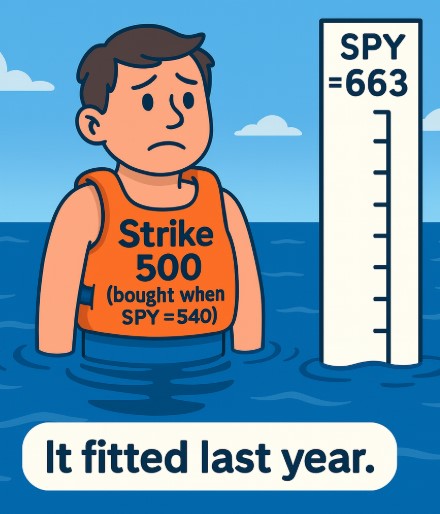
Risk & Tolerance
It is up to you as a trader to determine what kind of risk you are comfortable with. Just remember:
“Far more money has been lost by investors preparing for corrections, or trying to anticipate corrections, than has been lost in corrections themselves.”
Peter Lynch
Do I do it?
Do I do it myself? No, I think the cost of protection is too much when you look at how few times drops of this nature occur. Big down days are often followed by big up days (and vice versa) and although bear markets drop quickly it isn’t usually a one-day affair, so we have time for ITM to get us out. However, if limiting drawdowns is important to you then this is a way of doing it.

To the markets . .
A rather nice week last week. I don’t know if you celebrate milestones, but I do. I think it is important, as is the very silly victory dance which I do only in the privacy of my office. My big account has just reached a level I was aiming for so its off to celebrate at my favorite restaurant, Chez Pierre. I will raise a glass of bubbles to all my wonderful readers!
SPY Charts
SPY is going up nicely after its consolidation around $640. It is going up in nice short candles and on very high volume, both of which are encouraging signs. Low volume means that traders lack conviction, and big candles often mean indecision on the part of traders, and very big up candles are often followed by very big down candles. The orderly little candles creeping up is much more comforting.
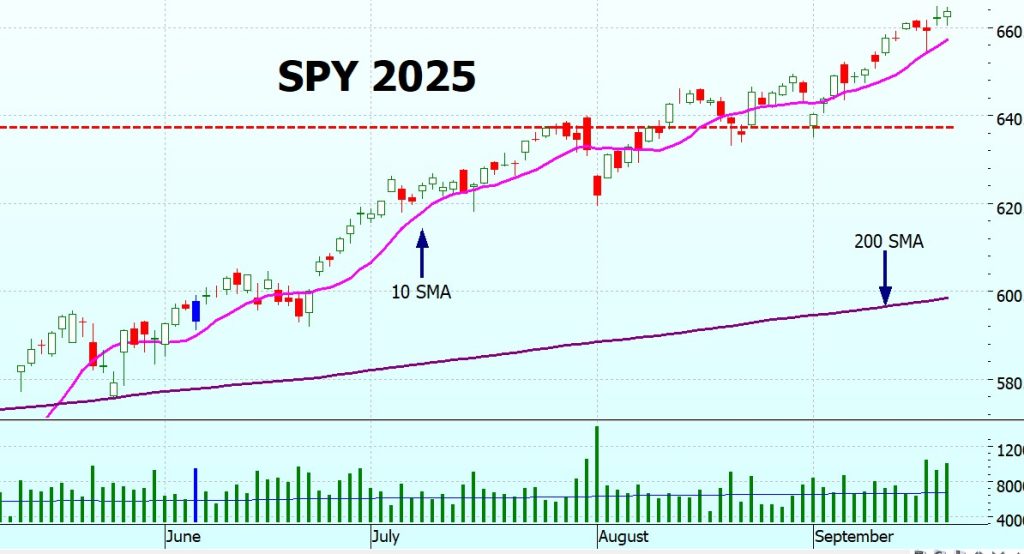
On the long term chart, the short uptrend is still intact, and SPY is heading towards the upper bound of the 5 year trading channel.
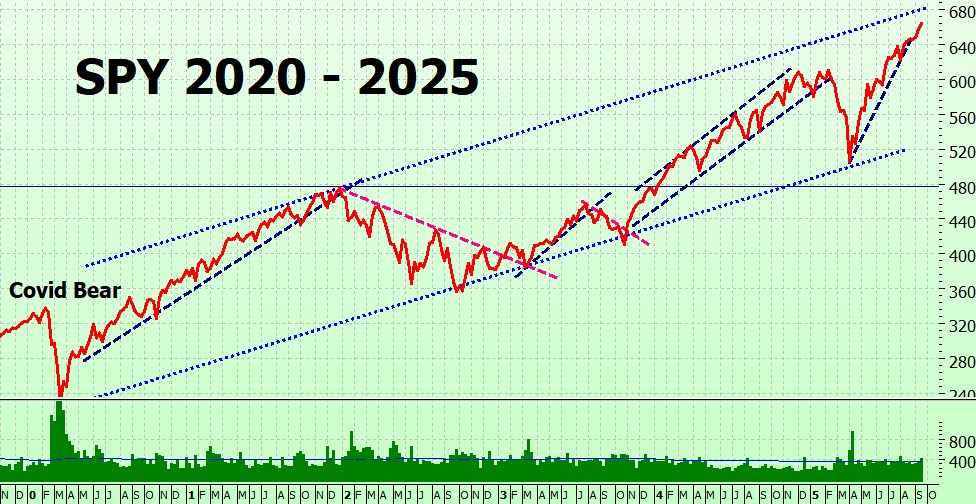
SPYG Charts
SPYG also looks nice, and is convincingly out of its Darvas box – which you notice was when it was trading at a 100, a nice round number. Coincidence?
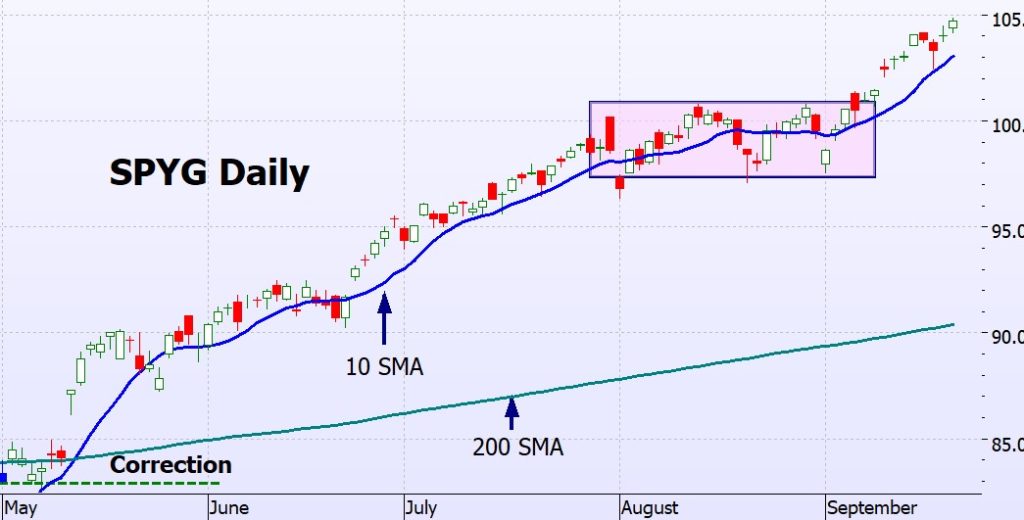
On the long term chart, we see that it has broken into its trading channel. That really was a sudden and nasty bear earlier this year, but luckily it wasn’t deep and it wasn’t long.
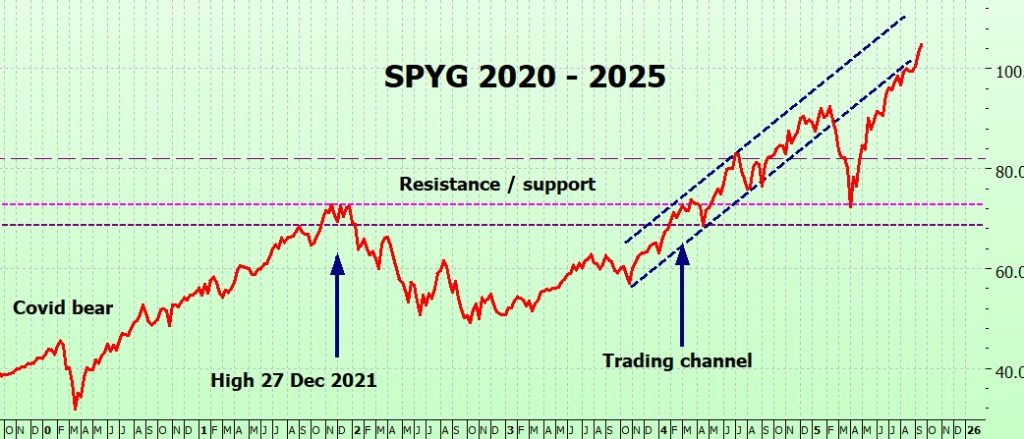
QQQ Charts
QQQ showing the same pattern as SPY and SPYG. Going up in nice small candles and on high volume.
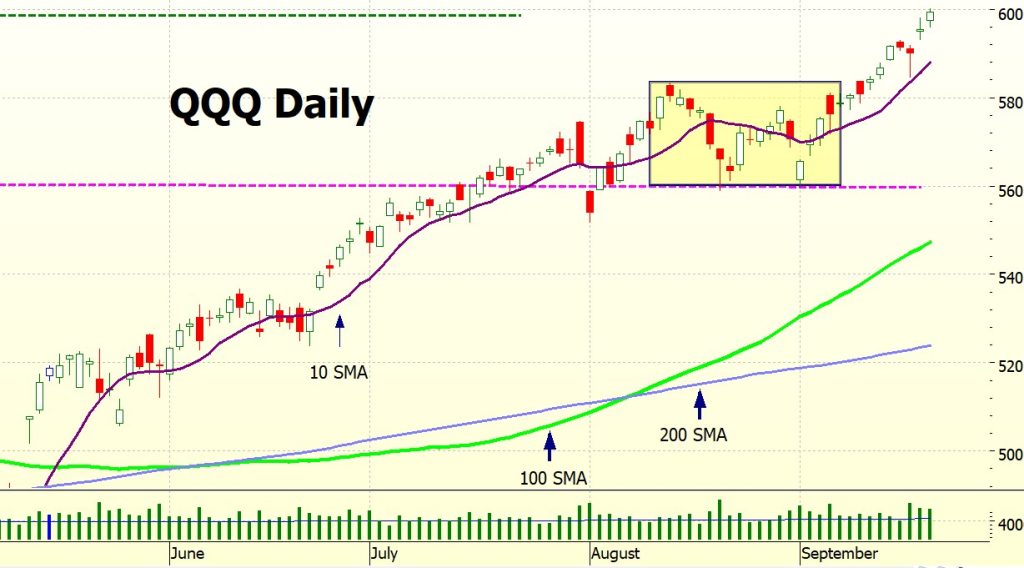
No surprises in the long term chart – right in the middle of the trading channel.
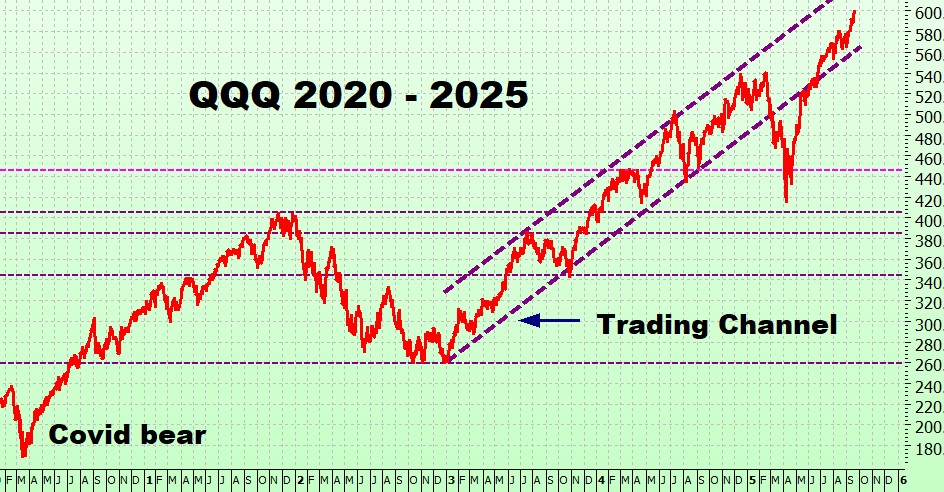
VIX Chart (Volatility)
The VIX is still in low-volatility territory.
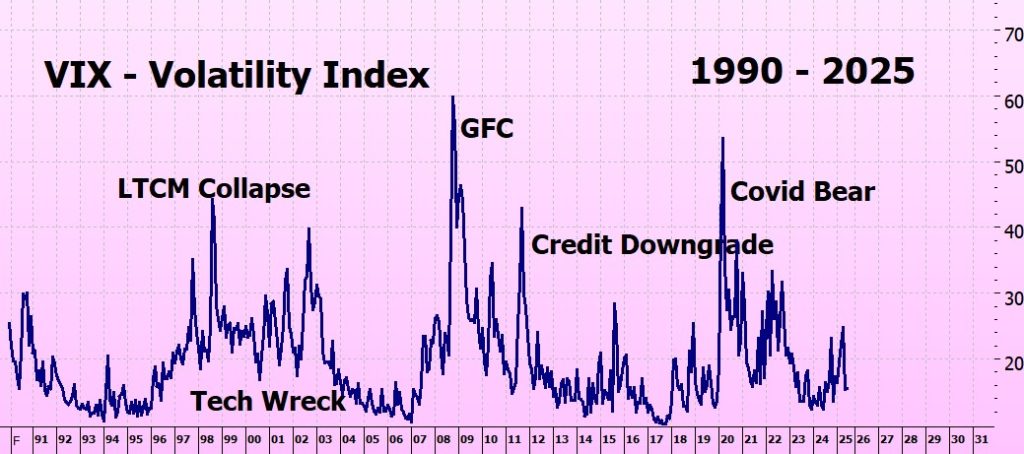
ITMeter

The week ahead . .
Relatively quiet. There are several speeches from Fed officials (why can’t they just keep quiet?!) and some announcements:
- Wednesday: U.S. International Transactions 2nd Qtr
- Thursday: GDP 2nd Qtr (third estimate!) and Durable Goods
- Friday: Personal Income and Outlays
Apart from that, all quiet. Good. Let’s hope it stays that way!
The futures . .
Neutral at this time, 10 hours to market open.

Talking Trading Podcast
As I mentioned before I have given an Interview to Louise Bedford, an author and investor who runs an Australian website & coaching program at https://talkingtrading.com.au/
I am a bit embarrassed about it (over and above the usual cringe of seeing yourself on camera!) as I said the 10/20 cross when, of course, I should have said the 10/200 cross. How I came to make such a silly mistake I don’t know – my only excuse is that I had been backtesting using all sorts of different combinations.
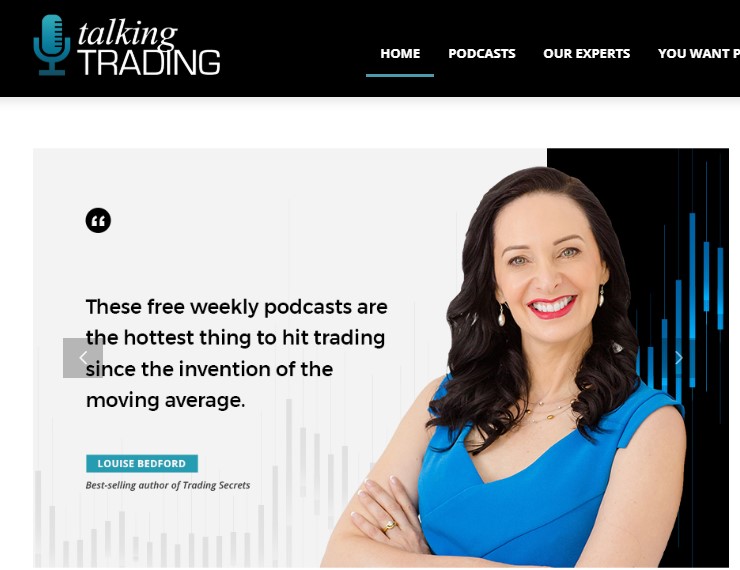
Here’s the link if you would like to see it: https://talkingtrading.com.au/ai-edge/
Be nice, now!
Fingers crossed for a good week!
Heather
Trade the tide, not the waves
Q & A
Related Posts
- Black Swan Trading
Black Swans & Long Tails. Black swan events are unpredictable and high-impact events that disrupt…



























28 Responses
Fun interview. I hope that lots of people buy you books AND implement them. It is so generous of you to share what you know with all of us. So many folks out there charging a fortune for much less effective strategies. Go Heather. Looking forward to the new book and whatever you have learned that can improve our timing.
Thank you – glad you enjoyed it! And I’ve been fortunate, so I feel I have to give back, if I can help people then that is great.
New book – yes, I want it to be the definitive ITM – am working on it now.
thank you!
h
Hi Heather, Discovered you on Louise Bedford Podcast last week. Very interested in your ITM call strategy. I have been selling naked puts for many years with average success. I am interested in your thoughts about instigated your DITM strategy using LEPOS rather than the DITM (50% of current price) calls. As you are aware LEPOS are literally the deepest ITM calls possible with usually only a few cents to pay at expiry. I do understand you pay an ongoing margin for the LEPOs. Look forward to your thoughts regards Rom
Hi Rom – yes naked puts can be tricky – great if all goes well, but if you get it wrong – Kaboom!!
I don’t trade the Australian market – I find it too limited, and transactions costs way too high, so have no personal experience of LEPOS. But I can’t see much difference between LEPOS and buying on margin. You still have margin calls – but on LEPOS they are margined daily, so you may have daily calls if the underlying falls and you are required to post margin.
I think – personally – that they are a terrible trap – I always recommend NOT to borrow for trading, it is too easy to get into debt and then you are not in control.
Sorry to be a wet blanket – but I would be very wary of buyikng them.
Hope this helps.
h
Dear Heather,
Such a great interview. Thank you so much. Please do some annual interviews like Berkshire Hathaway annual meetings since Warren Buffett is retiring this year in 2025.
Sincerely,
George Henry
HI George Henry – thank you!
An annual interview – what an interesting idea . . . .but I’m not sure I can emilate Buffett!
x
h
Don’t sell yourself short! Warren puts on his pants the same way you and we all do….one leg at a time. Except my back hurts these days when I do it. LOL!!
Ha! Made me laugh, and I love a good laugh!
Thank you!
x
h
Hi Heather,
I’m such a silly goose!
Thankfully, I just deleted my previous comment before it posted here about you mentioning 10/20 cross in your interview when it should have been 10/200 cross without reading your comments above because I was click happy in going to watch your interview. Yikes! If you got that email from me, please ignore and apologize for not paying attention.
Love your books and enjoyed the interview. Keep the weekly blogs coming and I look forward to reading them.
Cheers!
-Vic
Hey Vic – I still can’t believe I made such a stupid mistake – even worse that I didn’t look at the video for a few days (avoidance, you know) so by the time I watched it and heard the error it was too late. They managed to voice over on but the other 2 were still there.
Crazy – why did I do it??
h
In The week ahead . . there is one big item you missed. Congress must pass a budget by Friday to avoid a gov’t shutdown. (Actually, the gov’t fiscal year starts Oct 1). Now, they usually either pass a budget, or kick the can down the road and pass an INTERIM budget … but unfortunately, it tosses the market into jitters until something passes.
Hi Vern
yes, you are right . . I didn’t mention it because I try to keep off political stuff, but I probably should have.
As an outsider, I just can’t understan why America puts itself through this trauma every year or so!
So far it hasn’t been big news, even in the financial stuff I read, but no doubt it will start to gain momentum soon.
Why can’t everyone settle down and play nice????
h
Because we want Washington to live within its means like everyone else.
I don’t think any governments anywhere live within their means these days – but I wish they would!!
h
Read your books since they were first published. Big fan. And you’re too hard on yourself. You look lovely! Enjoyed the interview. Do more!
Hey Donny – how lovely of you.
I have gone quite bashful!
Thank you!
x
h
Your book was the first book that I read explaining and proving the advantages of DITM options on indexes. Options With Davis explained also his approach to using DITM Leap Options with rules of buying and rolling over, covering issues of cost and risk. My best reference is here: https://optionswithdavis.com/leaps-option-strategy-to-buy-stocks/ Also he explains on his YouTube subscription video: https://www.youtube.com/watch?v=SHNLK7o2Gc4&t=17s HOWEVER, what really has me excited is the possibility that 2 new emerging ETFs may have solved some of the drawdown issues. If DITM LEAPs are possible with these ETFs then THAT is interesting. I have used SumGrowth for 5 years and feel good about the associated products. Here are the link explaining the ETFs (EZ-MO and EZ-RO) that Teucrium should be supporting soon as the SEC processes things: https://us20.campaign-archive.com/?u=8fb805b25d2623858f83f9e5b&id=18a15994f8 FYI… We’ve Partnered with Teucrium ETF Solutions
David
Just watched your interview. Great job! I really enjoyed that.
By the way, how many syllables are in the word “No”. Haha.
Hey Michael – glad you enjoyed it.
Now am I right in inferring that you are making fun of my accent . . . ?
Or that I just say ‘no’ in a funny way?
Please don’t make me watch it again to find out – too excruciating!
x
h
H, I am from North Carolina, USA, so I bet you would get a kick out of my accent too! Hehe.
–Michael
Is that the ‘y’all’? accent?
h
Hey David – I have had a look at all the links – thank you:
1) LEAPS – yes, they are cheaper than buying stocks, I get that – but they only outperform stocks on a buy-and-hold strategy. My main problem is the ‘ buy all your favorite stocks at half-price or less!’. This comes back to stock-picking, which all research shows fails to beat the market more than 95% of the time. My position is that you need an underlying that is relatively predictable, so it needs to be an index. You can never predict what a stock is going to do.
2) EZ-RO and EZ-MO – Yes, they have outperformed the market, but not by as much as ITM. I also worry about websites that are fixed-width – it it, I always think, indicative of lack of innovation. But that is a personal prejudice! Not quite sure what they do, other than stock picking? Maybe I have that wrong – happy to be corrected.
h
It is my understanding that a call option is a synthetic long position with a built-in “protective put”, and that the strike price of that “protective put” is the strike price of the call.
Therefore, IF, and I say, IF you want to protect your position after a gain, it seems more efficient to simply roll up your call option using a strike price equal to where you would want the protective put with the same expiration, and pocket the credit. Your delta has dropped and is therefore protecting or cushioning any additional drops in the same way a protective put would while still leaving you in the market if the upmove continues.
The call option’s value automatically adjusts for owning a higher strike by the changing delta when it gains or loses value. I think owning a true put would adjust your position only by the difference in the two deltas, making no more change to your risk than simply moving your call strike to that same difference in deltas. If you own a 95 delta call and a -20 delta put, you own 75 delta, period. Therefore, I don’t think it’s necessary to purchase an additional put, only to roll your call to a higher strike to the 75 delta, if you’re getting antsy.
Does that make sense? Anyway, that is my line of reasoning, but I could be wrong. I frequently am 😉
HI Michael – yes, I understand that options have their own protection in that you can never lose more than you have paid for the premium.
BUT – the higher the strike the less likely you are to make consistent profits. Let’s say that you bought an option with a strike of 80% of current price because you didn’t want to lose more than 20% – unfortunately, on backtesting you are out of the market within a couple of years!
The likelihood of major losses that destroy your capital increases the closer you get to ATM options.
I tend not to use delta – I like to keep it simple – so if I have misunderstood you please get back to me.
h
I agree with you. It is easy for someone to become over leveraged with closer ITM and ATM options, and I tend to stay away from that. Your system is very profitable anyway.
I think it is a good policy to never trade more leverage with closer strikes than you would with a 60% strike. Either way, with your system, it would be very difficult to lose your entire option premium since we never hold until expiration. There is always extrinsic left in the option.
Hi Michael – yes, for ITM don’t go close than 60% strike. Akthough I do reserve a small part of my account (4% currently) to flutter on OTM . . .it is good fun, and sometimes even profitable!
h
There’s the accent. There’s our Hero! Nothing but blues skies from now on… I couldn’t help it “ more flight time on the Cessna 172 “ and an another day fishing. So the only way a top is made is by it going down. Out of the three QQQ • SPY • SPYG – which one is leading ( I’m not looking at them as much as you do )for example… there were always a few stocks leading the Dow Jones ( Big Blue comes to mind )
r
Hey Randy . . . depends what you mean by leading!
QQQ has increased the most – but I am finding that there is a better way to time it other than the 10/200 cross – writing it up in the new book. SPY going nicely. SPYG following QQQ mosre, mainly because the ‘growth stocks’ in SPY are mostly tech stocks – but, of course, the drawback with SPYG is the spread.
So just hang fie until I have completed the rewrite, I don’t want to jump the gun.
Blue skies – would be nice to fly again . . . but I don’t think I would pass the eyesight test any more!
x
h